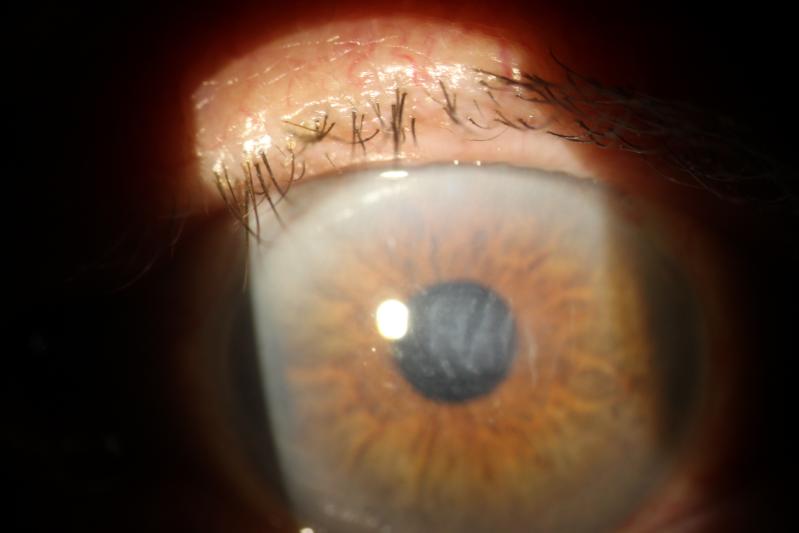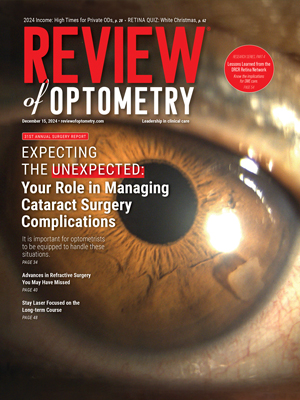 |
|
Alterations in proinflammatory cytokines might be the underlying cause of persistent anterior chamber inflammation after cataract surgery. Photo: Los Alamos Family Eyecare. Click image to enlarge. |
While cataract surgery is one of the most common and safest surgeries worldwide, postoperative inflammation remains a clinical challenge. Nevertheless, it remains unclear to what extent the post-op inflammation after cataract surgery may influence graft survival after Descemet’s membrane endothelial keratoplasty (DMEK) in patients with Fuchs' endothelial corneal dystrophy (FECD). It is speculated that the combined approach avoids a second surgical procedure and endothelial cell loss due to a second surgery.
Researchers at the University of Heidelberg in Germany aimed to fill this gap by characterizing cytokine dynamics in the aqueous humor of Fuchs’ patients before and after cataract surgery, therefore providing new insights into the postoperative condition of the eye after this procedure. Their investigation of the inflammatory response determined significant differences in cytokine concentrations between phakic FECD patients and phakic patients without any ocular pathologies. These researchers concluded in their study published in Ophthalmology and Therapy that it may be reasonable to combine cataract surgery with DMEK in phakic FECD patients or extend the interval between the two procedures to potentially enhance patient outcomes and minimize postoperative inflammation.
In this prospective single-center study, 15 patients with FECD underwent cataract surgery and DMEK in a two-stage procedure. Aqueous humor was collected from the anterior chamber at the beginning of cataract surgery and three months later at the beginning of DMEK. In the control group, which consisted of 15 age-matched phakic patients without FECD, aqueous humor was only collected at the beginning of cataract surgery.
The concentrations of TNF-α, IL-6, IL-8, CXCL5/ENA78, CCL2/MCP-1 and CCL4/MIP-1b were significantly higher three months after cataract surgery at the beginning of DMEK compared to the control group at the beginning of cataract surgery. The levels of IL-2, IL-5, IL-8, IL-10 and IL-1-α were significantly higher in phakic eyes in the control group before cataract surgery.
“It is conceivable that these factors are significantly increased three months after cataract surgery in eyes with FECD due to the breakdown of the immune privilege mechanisms that could lead to increased local inflammatory reaction,” the study authors suggested in their paper. “The alteration of these cytokines may be the causative mechanism for persistent anterior chamber inflammation.”
While the research team was able to assess cytokine and chemokine profiles in the FECD group at this time point, the absence of comparable data from the control group made it difficult for them to fully corroborate their findings.
“Without this data, we cannot definitively determine whether the elevated cytokine levels observed in the FECD group are unique to the disease or whether they may also be present in non-Fuchs’ patients post-cataract surgery,” they noted. “Future studies would benefit from including aqueous humor analysis in both groups at similar postoperative time points to strengthen the comparison and better understand the inflammatory dynamics in FECD vs. non-Fuchs’ eyes.”
| Click here for journal source. |
Chychko L, Son HS, Friedrich M, et al. Molecular changes in aqueous humor associated with inflammation following cataract surgery in patients with Fuchs’ endothelial corneal dystrophy. Ophthalmol Ther. November 24, 2024. [Epub ahead of print]. |


